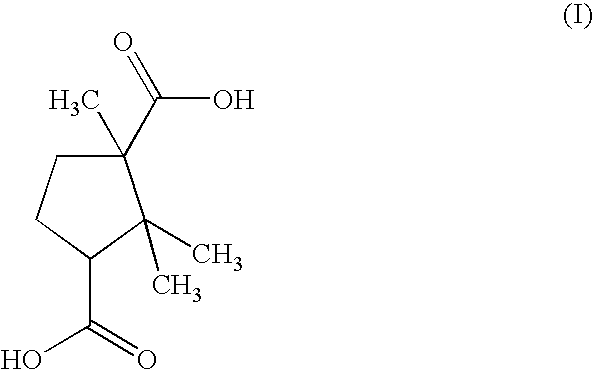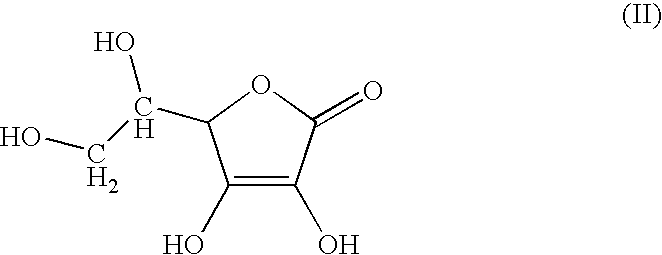Anti-microorganism terpenic composition
- Summary
- Abstract
- Description
- Claims
- Application Information
AI Technical Summary
Benefits of technology
Problems solved by technology
Method used
Image
Examples
example 1
[0028]A first preparation based on ascorbic acid, camphoric acid and zinc was prepared under ambient temperature and pressure conditions, i.e. approximately 298.15 K and 105 Pa. Nevertheless, in certain phases, the mixtures are slightly heated and stirred.
[0029]According to this first example, the camphoric acid of formula (I):
[0030]
is prepared from the camphor obtained according to a well-known method using pinene as starting material, by oxidation of the camphor.
[0031]Thus, 200 mg of camphoric acid are solubilized in 1 g of 90° ethanol. Next, 0.5 g of ultrapure water is added to the mixture.
[0032]The camphoric acid mixture is then combined with a zinc oxide in solution. For this, 81.3 mg of zinc oxide are mixed with 1 g of ultrapure water, and this mixture, after stirring, forms a milky solution. The abovementioned camphoric acid mixture is slowly poured into the milky solution. The whole is stirred moderately and intermittently. In addition, between each stirring phase, it is sli...
example 4
[0044]148 mg of cinnamic acid are solubilized in 1 g of ethanol and 500 mg of ultrapure water are added thereto. 132.65 mg of zinc camphorate obtained according to the above method are incorporated into the solution thus prepared. After dissolution, a precipitate forms, said precipitate corresponding to zinc cinnamo-camphorate, which is water-soluble at 1 / 1000, denoted 1 / 1000th dilution (one part by weight per 1000 parts of water by weight), which is recovered.
[0045]Thus, table I below summarizes the molar proportions of the basic constituents of the four preparations above, obtained in the corresponding four examples and on the basis of which terpenic compositions in accordance with the invention are prepared.
[0046]
TABLE IZincCamphoricAscorbicCinnamicoxidePreparationsacidacidacidZnOFirst200 mg176 mg81.3 mgSecond200 mg352 mg81.3 mgThird200 mg704 mg81.3 mgFourth100 mg148 mg40.65 mg
[0047]In order to carry out cytotoxicity and infection-inhibiting activity tests, three cell types and ...
PUM
| Property | Measurement | Unit |
|---|---|---|
| Mass | aaaaa | aaaaa |
| Mass | aaaaa | aaaaa |
| Mass | aaaaa | aaaaa |
Abstract
Description
Claims
Application Information
 Login to View More
Login to View More - R&D
- Intellectual Property
- Life Sciences
- Materials
- Tech Scout
- Unparalleled Data Quality
- Higher Quality Content
- 60% Fewer Hallucinations
Browse by: Latest US Patents, China's latest patents, Technical Efficacy Thesaurus, Application Domain, Technology Topic, Popular Technical Reports.
© 2025 PatSnap. All rights reserved.Legal|Privacy policy|Modern Slavery Act Transparency Statement|Sitemap|About US| Contact US: help@patsnap.com



